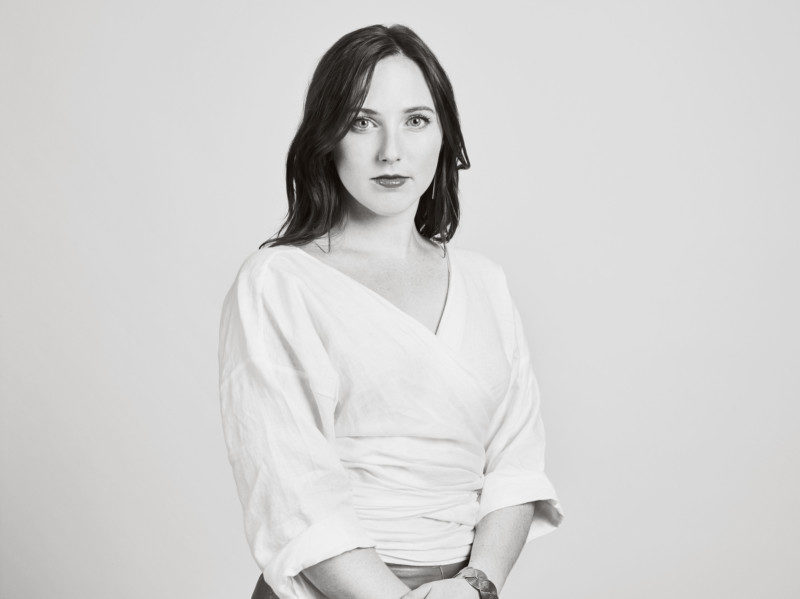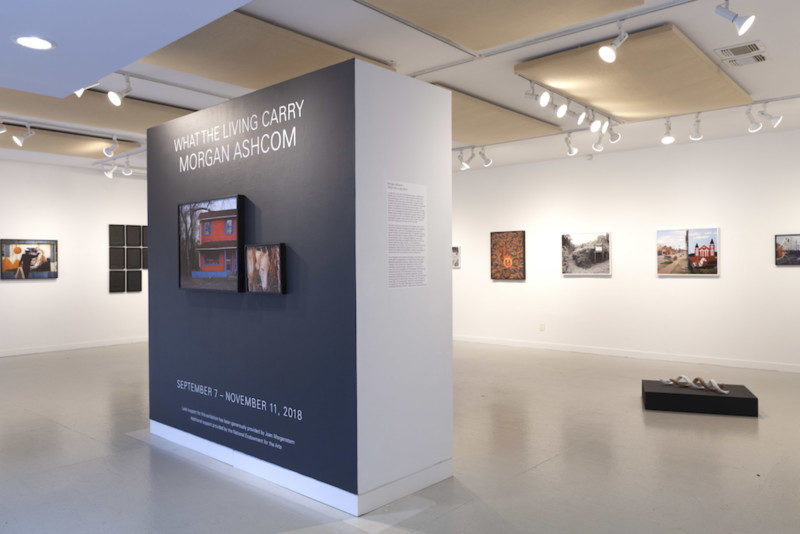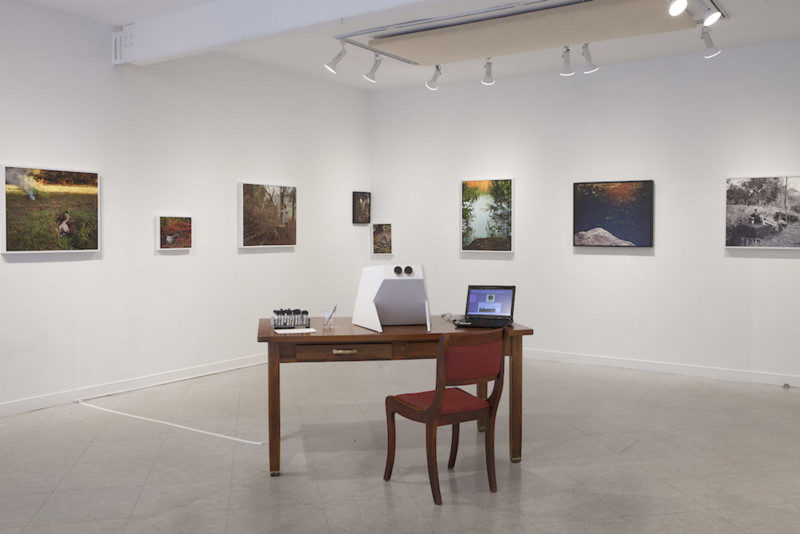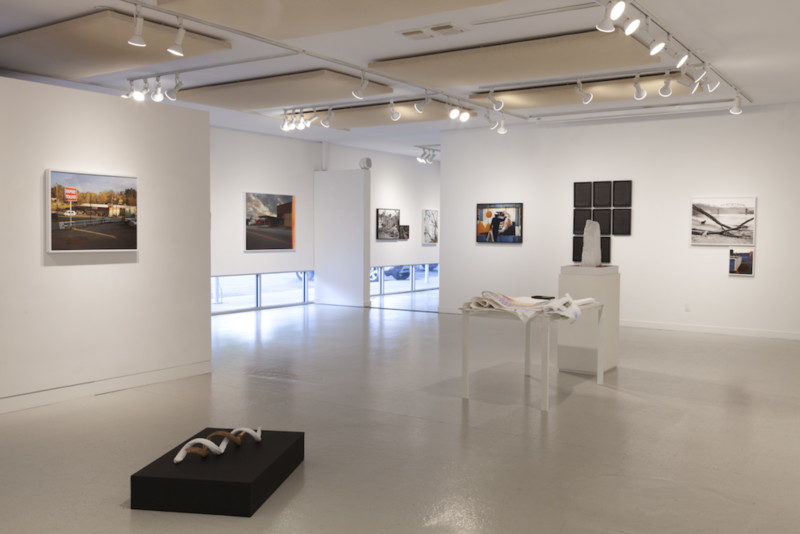‘Behind The Scenes’
For our new ‘Behind The Scenes’ series, we interview those that find art, champion art, and talk about art. These influencers, whether it be art critics, independent curators or writers, gallery or museum directors, are paramount in how we go forward in the ever-changing dialogue between artists and the world.
Who are they? What do they do? How do they think? And what are they working on? These are a few questions we plan on asking our contemporaries.
Our next conversation is with Ashlyn Davis, the Executive Director at Houston Center For Photography. Ashlyn became the Executive Director of HCP in 2016, and since then, has been incredibly influential in elevating the conversation surrounding photography both in Texas, and the US. Currently, HCP is exhibiting Morgan Ashcom’s ‘What The Living Carry’. The exhibit will be up until November 11th.

Credit – Jan Rattia
Could you start us off with describing how you became interested in photography, and your journey to becoming the Director of The Houston Center for Photography?
Well, it’s a somewhat long and winding road, but the short story is that I was exposed to the arts from a very early age, and as I approached my teenage years, photography became the visual art form I gravitated towards. I was also extremely lucky to attend a public high school in Texas that had a darkroom, a wonderful photography program, and an AP Art History program, which I took full advantage of. (I actually helped to petition my high school to start its first AP Art History course!)
All that prepared me for my undergraduate studies at Pratt Institute, where I ultimately majored in Art History. I spent five more years working in various arts and publishing organizations in New York City and eventually found myself wanting to pursue my Master’s Degree focusing on the history of photography. After I completed my MA at the University of Texas, a job immediately opened up at Houston Center for Photography, which was coincidentally where I did my first internship right out of high school. It was a perfect fit at the perfect time. After a year with the organization, I was asked to be the Executive Director.
Since assuming the role of Executive Director at Houston Center for Photography in 2016, what’s been one of your proudest moments? How have you influenced HCP?
Just five days after the flood waters from Hurricane Harvey subsided, we opened Genevieve Gaignard’s first solo exhibition outside California, In Passing. It was an extremely difficult decision – whether to open a show and celebrate art when our city was still suffering immensely. The opening night of the exhibition more than doubled our regular attendance and it has been one of the most well-attended exhibitions in our organization’s 37-year history. For me, it was a reminder that free, open-to-the-public arts institutions like Houston Center for Photography matter immensely. What we do here is never just about art; it’s about creating room for each other, for dialogue, and for community-building.
This exhibition attempted to make a very academic topic – intersectionality – accessible to a broad public through Genevieve’s self-portraits, and as far as I can tell, we succeeded. If I leave any legacy at this institution, I hope it’s that we didn’t shy away from difficult conversations, even at times pointing out the metaphorical elephant in the room. Instead, we strive to make the seemingly inaccessible approachable, understandable, and meaningful to anyone who walks through our doors. In Passing was the first show I curated at HCP, and I’m extremely proud that Genevieve and I have been invited to re-create and expand on the exhibition this upcoming January at the Art Galleries at the center for Black Studies at the University of Texas at Austin.
What strikes me as particularly interesting is your willingness to confront these different conversations in addition to this constant battle of exclusion vs inclusion in the art world. The balancing act of what the public can weather and the exclusiveness of the photograph can be a hard string to tune. When you’re choosing bodies of work to be exhibited, artists to feature, etc. do you consider the needs, or context of the work within the community? How the public will react? Or do you trust the work will speak for itself with the helping hand of the curator?
Yes. My responsibility as a curator is not to choose work because I like it, but to select work because it creates dialogue with the communities my institution is situated in. This includes the communities of Houston and the greater Southeast region as well as the broader world of photography. I always try to anticipate a general viewer’s response and use that to shape the programming around the show. It’s about making the more difficult conceptual and aesthetic aspects of art extremely accessible and interesting to an everyday viewer as well as a more seasoned expert in the field. While we may address academic or intellectual topics through our shows, my primary goal is to make it relatable and approachable from multiple angles.
We do this in part by trying to guide our viewers who may feel intimidated by challenging work to break it down in the simplest of ways through self-led gallery guides and scavenger hunts that our Community Education Department creates. Questions as simple as, “What do I see? How does it make me feel? Who made it and for whom? Do I like it or not like it? And, why?” can lead most viewers into a deeper engagement with the work. My job isn’t to speak for the work; it’s to put the work into context – culturally, technologically, and aesthetically.
Right now, HCP is showing Morgan Ashcom’s ‘What The Living Carry’ (up until November 11th), an excellent body of work examining the fictional town of Hoy’s Fork. What kinds of questions and dialogue(s) did you anticipate rising from this exhibition from viewers? What were some of your first thoughts when you saw the work?
We just had a discussion, the first in our new Words & Pictures lecture series, that centered around the themes of truth and history in Morgan’s work. Much of Morgan’s project revolves around his exploration of how we inherit and create the identity of a place and its inhabitants. In a sense, he’s questioning the depth of the line between history and storytelling through the creation of this town of Hoy’s Fork. I anticipated the initial public conversation to center around narrative in photography and the ways in which we view rural America through the photograph. And, with the three-dimensional objects in the exhibition, I expected there to be questions about reproduction, translation, and veracity, which are elements that are inherent in this project. In a larger sense, my hope is that viewers begin to understand that even the seemingly traditional, straight photograph can carry the heavy weight of such a conceptual task.



In addition, can you speak about coming across Morgan’s work, and why you thought HCP would be a fitting venue for the work?
I’ve followed Morgan’s work for several years, and I was eager to see it in its final book form when MACK Books published it in 2017. The project was initially compelling to me because it presents a very poetic description of place – much like a novel or long poem – while it also comments conceptually on our relationship to the medium of photography. The photograph’s ability to fully portray any truth is something I’ve seen many young artists grappling with in recent years. I had been trying to locate in our broader culture why this might be, and for me, it seems quite apparent that there’s an increasing disillusionment with power and its impact on society, including what we see, what we don’t see, and how it’s presented – often through the photograph. The fall of 2018 seemed to be a timely opportunity to create discussion around this in a way that wasn’t didactic or overtly political – in a way that allowed viewers to really think about this idea without a pretext built into it.
How would you suggest an artist approach a gallery that they think would be a “good fit”?
I would suggest that artists really come to understand a gallery, its mission, and how they tend to organize their exhibitions. Many galleries do not welcome or accept unsolicited proposals; others, like HCP, have annual calls for work. Finally, I would suggest that the artist really be able to articulate why they feel it would be a good fit within the context of the institution’s prior programming.
What (in your opinion) makes a good gallery / museum experience?
A great art-viewing experience directs the viewer enough to give them context for what they’re looking at (through exhibition design, layout, and/or didactic text), but lets them lead the discussion in their minds, draw the big conclusions for themselves, and ultimately come to understand the work on their own terms.